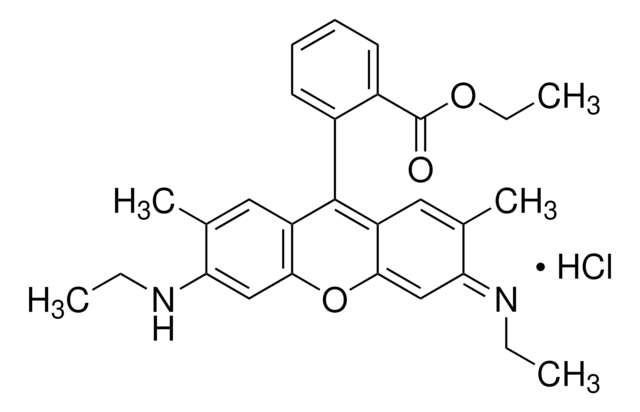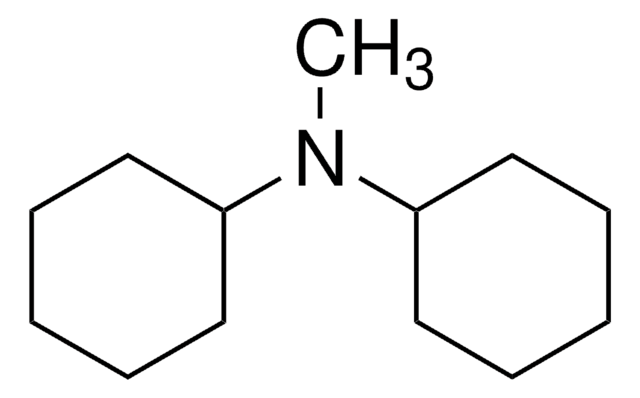41690
4,N,N-Trimethylaniline
catalyst grade (for peroxide polymerization), ≥98.5% (GC)
Sinonimo/i:
4-Dimethylaminotoluene, N,N-Dimethyl-p-toluidine
About This Item
Prodotti consigliati
Grado
catalyst grade (for peroxide polymerization)
Livello qualitativo
Densità del vapore
>1 (vs air)
Saggio
≥98.5% (GC)
Forma fisica
liquid
Limite di esplosione
7 %
Indice di rifrazione
n20/D 1.546 (lit.)
n20/D 1.547
P. eboll.
211 °C (lit.)
90-92 °C/10 mmHg (lit.)
Densità
0.936 g/mL at 20 °C
0.937 g/mL at 25 °C (lit.)
Gruppo funzionale
amine
Stringa SMILE
CN(C)c1ccc(C)cc1
InChI
1S/C9H13N/c1-8-4-6-9(7-5-8)10(2)3/h4-7H,1-3H3
GYVGXEWAOAAJEU-UHFFFAOYSA-N
Cerchi prodotti simili? Visita Guida al confronto tra prodotti
Categorie correlate
Descrizione generale
Applicazioni
- Charge-transfer complexes for redox polymerization: 4,N,N-Trimethylaniline used for on-demand amine/peroxide redox polymerization. This research offers a new perspective on the use of 4,N,N-Trimethylaniline in creating controlled polymer structures, which is crucial for various industrial and pharmaceutical applications (Garra et al., 2018).
Avvertenza
Avvertenze
Danger
Indicazioni di pericolo
Consigli di prudenza
Classi di pericolo
Acute Tox. 2 Inhalation - Acute Tox. 3 Dermal - Acute Tox. 3 Oral - Aquatic Chronic 3 - Carc. 1B - Repr. 2 - Skin Sens. 1 - STOT RE 2 Oral
Organi bersaglio
Reproductive organs
Codice della classe di stoccaggio
6.1A - Combustible acute toxic Cat. 1 and 2 / very toxic hazardous materials
Classe di pericolosità dell'acqua (WGK)
WGK 3
Punto d’infiammabilità (°F)
168.8 °F - closed cup
Punto d’infiammabilità (°C)
76 °C - closed cup
Dispositivi di protezione individuale
Eyeshields, Faceshields, Gloves, type ABEK (EN14387) respirator filter
Scegli una delle versioni più recenti:
Possiedi già questo prodotto?
I documenti relativi ai prodotti acquistati recentemente sono disponibili nell’Archivio dei documenti.
Il team dei nostri ricercatori vanta grande esperienza in tutte le aree della ricerca quali Life Science, scienza dei materiali, sintesi chimica, cromatografia, discipline analitiche, ecc..
Contatta l'Assistenza Tecnica.









